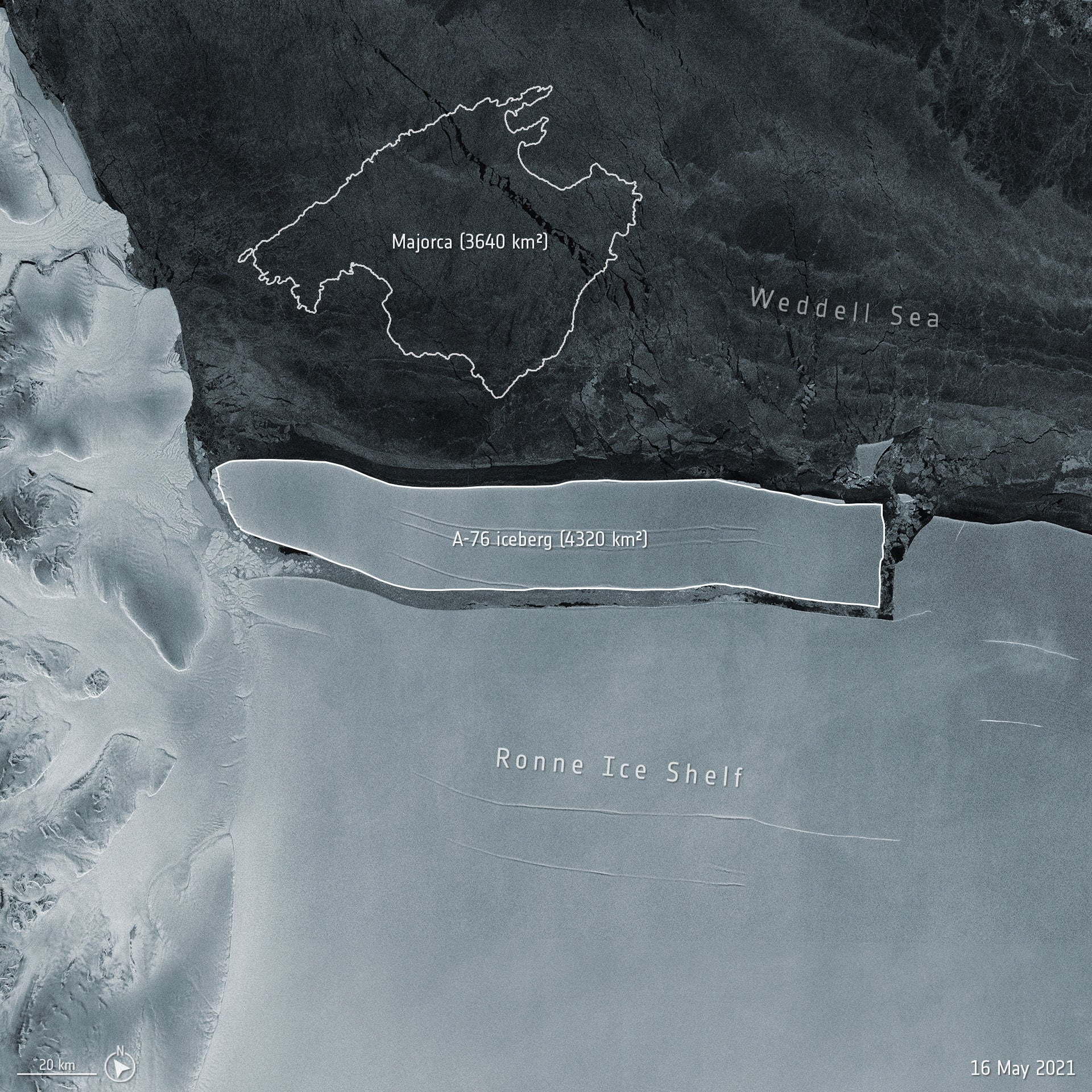World’s largest iceberg, bigger than Majorca, breaks off from Antarctica
Ice block more than 100 miles in length separates from Ronne Ice Shelf

Your support helps us to tell the story
From reproductive rights to climate change to Big Tech, The Independent is on the ground when the story is developing. Whether it's investigating the financials of Elon Musk's pro-Trump PAC or producing our latest documentary, 'The A Word', which shines a light on the American women fighting for reproductive rights, we know how important it is to parse out the facts from the messaging.
At such a critical moment in US history, we need reporters on the ground. Your donation allows us to keep sending journalists to speak to both sides of the story.
The Independent is trusted by Americans across the entire political spectrum. And unlike many other quality news outlets, we choose not to lock Americans out of our reporting and analysis with paywalls. We believe quality journalism should be available to everyone, paid for by those who can afford it.
Your support makes all the difference.The world’s largest iceberg has broken off the coast of Antarctica, with aerial measurements calculating it to be larger than the Spanish island of Majorca.
The iceberg, which is around 105.6 miles in length and 15.5 miles wide, separated from the western side of the Ronne Ice Shelf and is now floating in the Antarctic Weddell Sea, according to the European Space Agency (ESA), which named the berg A-76.
Covering an area of 1,668 square miles, A-76 has passed A-23A – which measures about 1,498 square miles – as the world’s biggest iceberg.
The new iceberg was first detected by the British Antarctic Survey and then confirmed by the US National Ice Centre.
Last December, scientists feared that the A-68 iceberg – the world’s largest at the time – was on course to collide with the South Georgia Island, potentially causing serious damage to local wildlife. However, by April, A-68 – once weighing billions of tonnes – had melted into several fragments no longer worth tracking.
Craig Donlon, the ESA’s principal scientist for oceans and ice, said: “The Filshner-Ronne Ice shelf is really important since it discharges about 10 per cent of the Antarctic Ice sheet into the Southern Ocean influencing the ocean thermohaline circulation.
“If warmer ocean water were to flood the cavity beneath the ice shelf, it could lead to irreversible basal melting with profound impacts. However, this is an area of on-going research that requires more measurements from space and in situ to monitor Filshner-Ronne dynamics.”
Average sea levels have risen by almost 29cm (nine inches) since 1880. If countries only fulfil their national climate targets, glaciers and ice sheets will melt at a speed that will raise sea levels twice as quickly as they would if they met the pledges enshrined in the Paris Agreement, according to a recent study published in Nature.
Join our commenting forum
Join thought-provoking conversations, follow other Independent readers and see their replies
Comments